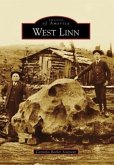Located in the southeastern corner of Oregon, Harney County covers approximately 10,600 square miles and supports a population of just over 7,000 residents. The topography of the land has shaped the identity of the county as well as the character of the people who chose to make their livelihood here. Harney's vast and rugged landscape spans from the snow-swept summit of Steens Mountain to the green-forested slopes of the Ochoco and Malheur National Forests; from the lush valleys of the Blitzen, Silvies, and Malheur Rivers to the sagebrush- and juniper-dotted plains of the high desert. The geographic isolation of the county fostered a sense of independence among the early settlers as well as a great sense of community.








